Voodoo Child (Eternal Returds)
See the project
Curated by Mike Watson, Kulttuuritalo Valve, Oulu, Finland.
23 August 2019
![]()
The performance will involve two performers wearing long robes, sounds played by an electronic musician, who will make an edit of the shouts and cries of various musicians at festivals such as woodstock, isolated from the sound of the crowd.
The two performers will lie in a puddle of mud, part of their bodies just visible, their epileptic movements responding to the DJ’s whoops. Gradually they will produce sticks, which they will insert into their robes to create a kind of dwelling, reminiscent of the temporary dwellings found at festivals, or as makeshift housing for homeless people.
In the background there will be a video played by live VJ depicting the empty Woodstock stage, where Jimmy Hendrix’s band’s instruments are set up, ready and waiting, yet the musicians never appear.
The performance focuses on hope and subsequent sense of failure that accompanies the festival, the rave, the carnival. This sense of hope passes with each grand event and again in a bigger sense with the growing elderly of each generation. The temporary dwelling made by the performers signals a resistance in the face of the inevitability of each generational hope passing. We can see a similar process of hope fading and its renewal in the passing of the dream of the internet as a medium that would foster worldwide democracy, and in its appropriation as a space of self promotion, obscure creativity and criminal organisation.
![]()
![]()
See the project
Curated by Mike Watson, Kulttuuritalo Valve, Oulu, Finland.
23 August 2019
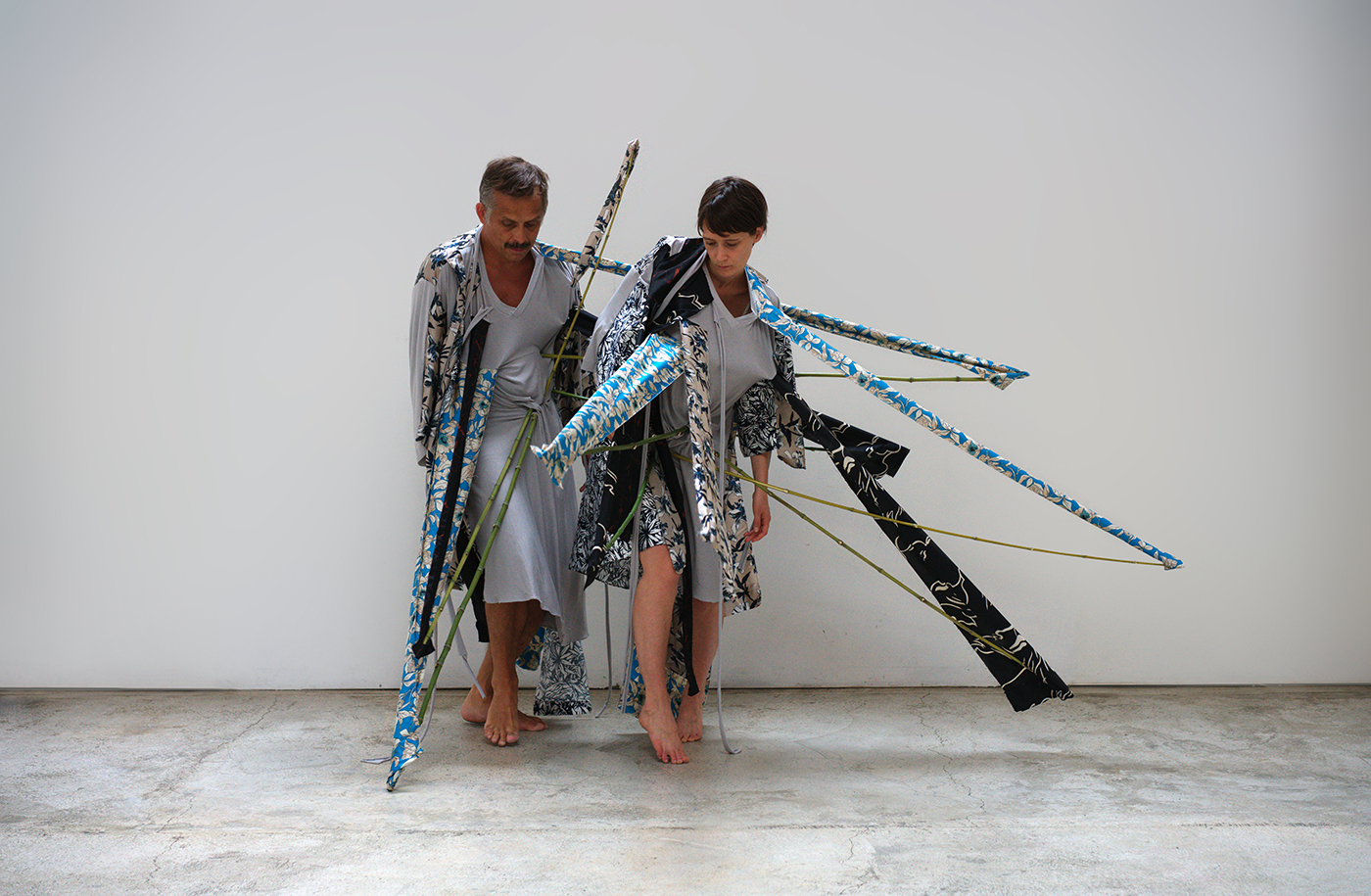
The performance will involve two performers wearing long robes, sounds played by an electronic musician, who will make an edit of the shouts and cries of various musicians at festivals such as woodstock, isolated from the sound of the crowd.
The two performers will lie in a puddle of mud, part of their bodies just visible, their epileptic movements responding to the DJ’s whoops. Gradually they will produce sticks, which they will insert into their robes to create a kind of dwelling, reminiscent of the temporary dwellings found at festivals, or as makeshift housing for homeless people.
In the background there will be a video played by live VJ depicting the empty Woodstock stage, where Jimmy Hendrix’s band’s instruments are set up, ready and waiting, yet the musicians never appear.
The performance focuses on hope and subsequent sense of failure that accompanies the festival, the rave, the carnival. This sense of hope passes with each grand event and again in a bigger sense with the growing elderly of each generation. The temporary dwelling made by the performers signals a resistance in the face of the inevitability of each generational hope passing. We can see a similar process of hope fading and its renewal in the passing of the dream of the internet as a medium that would foster worldwide democracy, and in its appropriation as a space of self promotion, obscure creativity and criminal organisation.
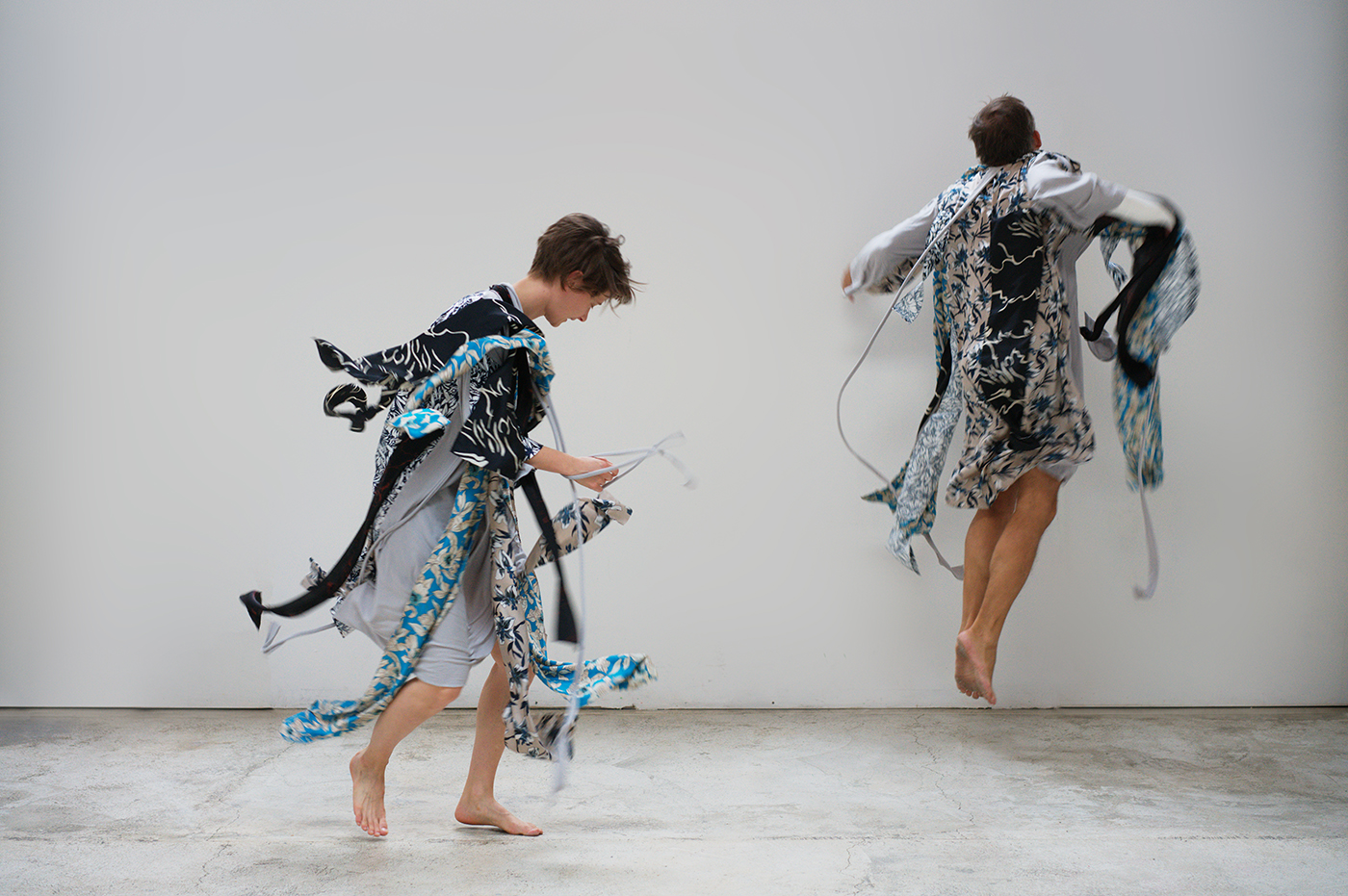
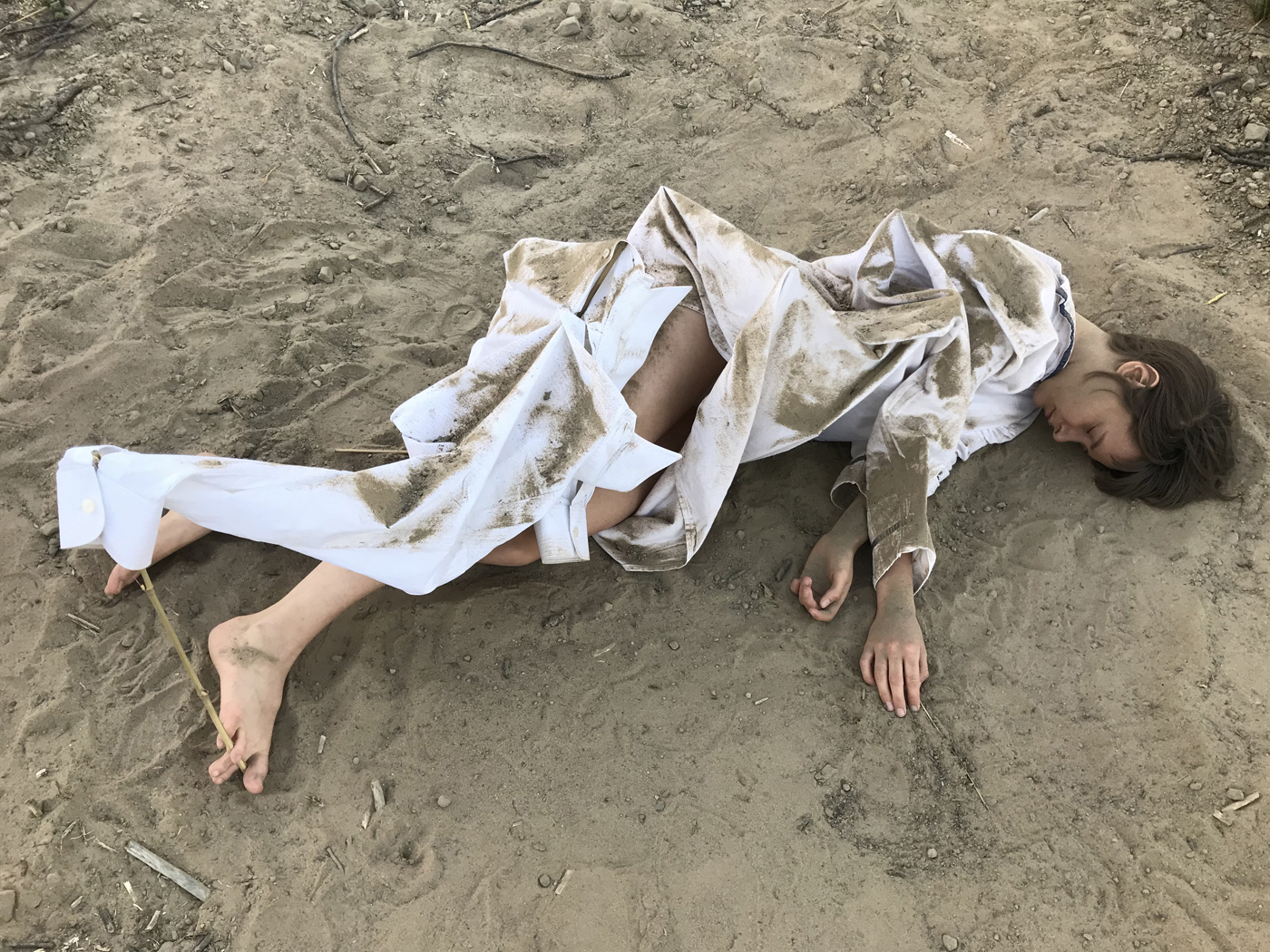
Grotesque Games
See the project
We Have Nearly Lost Control, curated by Mike Watson, Macro Asilo, Roma.
27 October 2018
![]()
The performance that took place at the Museo Macro was inspired by Greek/Roman fighting traditions. Eight couples took part. Each member of each couple tried to gain possession of their adversary's testament, an object which passed between one member of the group to the next continuously, as in a relay race. The messenger with the testimony become the vehicle through which knowledge is imparted, thus changing the fate of the country. Each performer, in an attempt to dominate their adversary, tussled animatedly between moments of calm. The continually changing nature of the fight evolved into a kind of erotic game, like the hallucinatory state of the lovers in the desert in Michelangelo Antonioni’s film, Zabriskie Point. This power game continued to play out through an infinity of plots in which each attempt to exclude the other leads to a persistent undulatory movement.
![]()
See the project
We Have Nearly Lost Control, curated by Mike Watson, Macro Asilo, Roma.
27 October 2018

The performance that took place at the Museo Macro was inspired by Greek/Roman fighting traditions. Eight couples took part. Each member of each couple tried to gain possession of their adversary's testament, an object which passed between one member of the group to the next continuously, as in a relay race. The messenger with the testimony become the vehicle through which knowledge is imparted, thus changing the fate of the country. Each performer, in an attempt to dominate their adversary, tussled animatedly between moments of calm. The continually changing nature of the fight evolved into a kind of erotic game, like the hallucinatory state of the lovers in the desert in Michelangelo Antonioni’s film, Zabriskie Point. This power game continued to play out through an infinity of plots in which each attempt to exclude the other leads to a persistent undulatory movement.

Saccomazzone Game
See the project
Politics of Dissonance, curated by Mike Watson, Manifesta 12 Collateral Events, Palermo.
July 2018
![]()
Saccomazzone is a game that was originally played between two blindfolded peasants. They used something often described as a sort of cloth made from strips of rags knotted together.
They gripped it with one hand while the other hand rested on a very low pedestal where they had to stay.
This was how blindfolded players maintained a constant distance between them. They tried to hit each other with the knotted rags and the one who was hit the most lost. This game, very popular in the past, and often appearing in paintings and sculptures, is almost never played today.
In the Boboli gardens in Florence there is a statue of Saccomazzone players, sculpted by Orazio Mochi in 1620 from a drawing by Romolo del Tadda.
This game of hitting each other’s heads to see who wins reminds us of the way the jockeys whip their horses, except that things have been switched around. The player feels the snap of the whip directly on his body, reminding him of the violence suffered by the animal.
The performers are dressed as jockeys but they don’t ride horses; they are fixed in one place. The whole area is bombarded by the amplified sound of illegal horse racing in Palermo. The thundering engines of the scooters surrounding the horses and jockeys creates an atmosphere bristling with tension. Behind them images of illegal horse races are projected onto the walls.
By now the sound dominates the space, creating a kind of noise music somewhat reminiscent of Luigi Russolo’s Intonarumori futuristic experiences. Every door of the city of Palermo has been assaulted by civilisations from every part of the world.
See the project
Politics of Dissonance, curated by Mike Watson, Manifesta 12 Collateral Events, Palermo.
July 2018
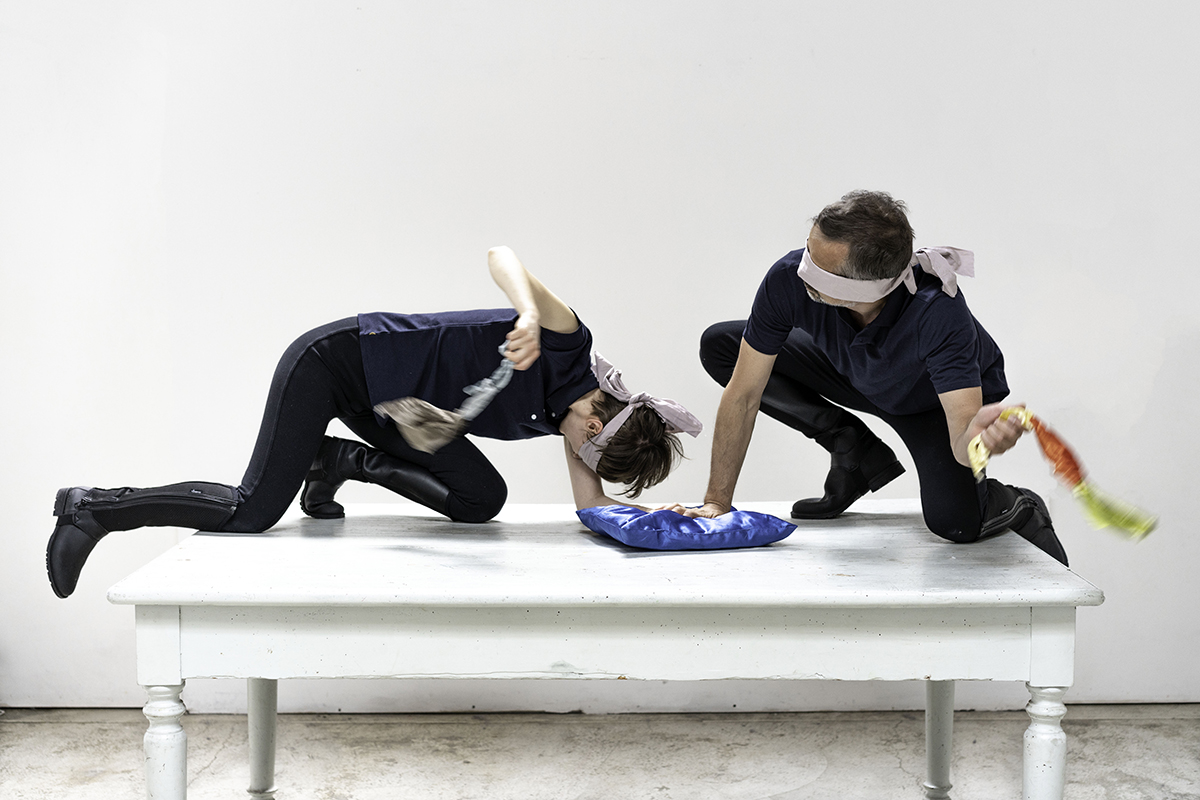
Saccomazzone is a game that was originally played between two blindfolded peasants. They used something often described as a sort of cloth made from strips of rags knotted together.
They gripped it with one hand while the other hand rested on a very low pedestal where they had to stay.
This was how blindfolded players maintained a constant distance between them. They tried to hit each other with the knotted rags and the one who was hit the most lost. This game, very popular in the past, and often appearing in paintings and sculptures, is almost never played today.
In the Boboli gardens in Florence there is a statue of Saccomazzone players, sculpted by Orazio Mochi in 1620 from a drawing by Romolo del Tadda.
This game of hitting each other’s heads to see who wins reminds us of the way the jockeys whip their horses, except that things have been switched around. The player feels the snap of the whip directly on his body, reminding him of the violence suffered by the animal.
The performers are dressed as jockeys but they don’t ride horses; they are fixed in one place. The whole area is bombarded by the amplified sound of illegal horse racing in Palermo. The thundering engines of the scooters surrounding the horses and jockeys creates an atmosphere bristling with tension. Behind them images of illegal horse races are projected onto the walls.
By now the sound dominates the space, creating a kind of noise music somewhat reminiscent of Luigi Russolo’s Intonarumori futuristic experiences. Every door of the city of Palermo has been assaulted by civilisations from every part of the world.
Book Block
Art. Class. War (Antiuniversity 2017 Closing Party), curated by Mike Watson, London
June 2017
![]()
Art is entwined with both class and war as it provides the tools to promote the interests of the capitalist class via signs which mesmerise, confuse and pacify. Sometimes these signs, like flags and royal seals, are put directly to the service of power. At other times art is used to provide a cultural distraction for the elite, who lose themselves in the irony and glamour of the biennale or art fair. For this reason, art can only challenge the injustices of class and war if it first engages in its own war of class with itself. We need to address the unfair working and appointment practices, low or no wages, workplace discrimination by gender, race and sexuality as well as sexual harassment. Art. Class. War aims to place the art world for one evening firmly at the centre of these issues involving the public in a night of music and performance, aiming above all to ask what role art has to play in the nexus of class and war. Proposed artists: League of Art Legends (Electronica and VJ set, Mike Watson and Simone Bertugno), Andrew Cooper (performance), Snovit Hedstierna, Robert Pettena, Shiraz Bayjoo, Antti Tenetz (VJ performance), Fiamma Montezemolo (projection), Mark McGowan.
Robert created an archeological site composed of books concerned with human rights and their violations; the gradual erosion of our human rights in the name of security, trade agreements and corporate power.
He built the books into a miniature city, which he then covered with clay, leaving a few relevant titles half exposed, perhaps focussing on Trades Unions, workers rights, freedom of speech, privacy, to show how all of these Universal Human Rights are being gradually buried under a barrage of multinational agreements and national legislation, now only dimly remembered.
![]()
![]()
![]()
![]()
![]()
![]()
Art. Class. War (Antiuniversity 2017 Closing Party), curated by Mike Watson, London
June 2017
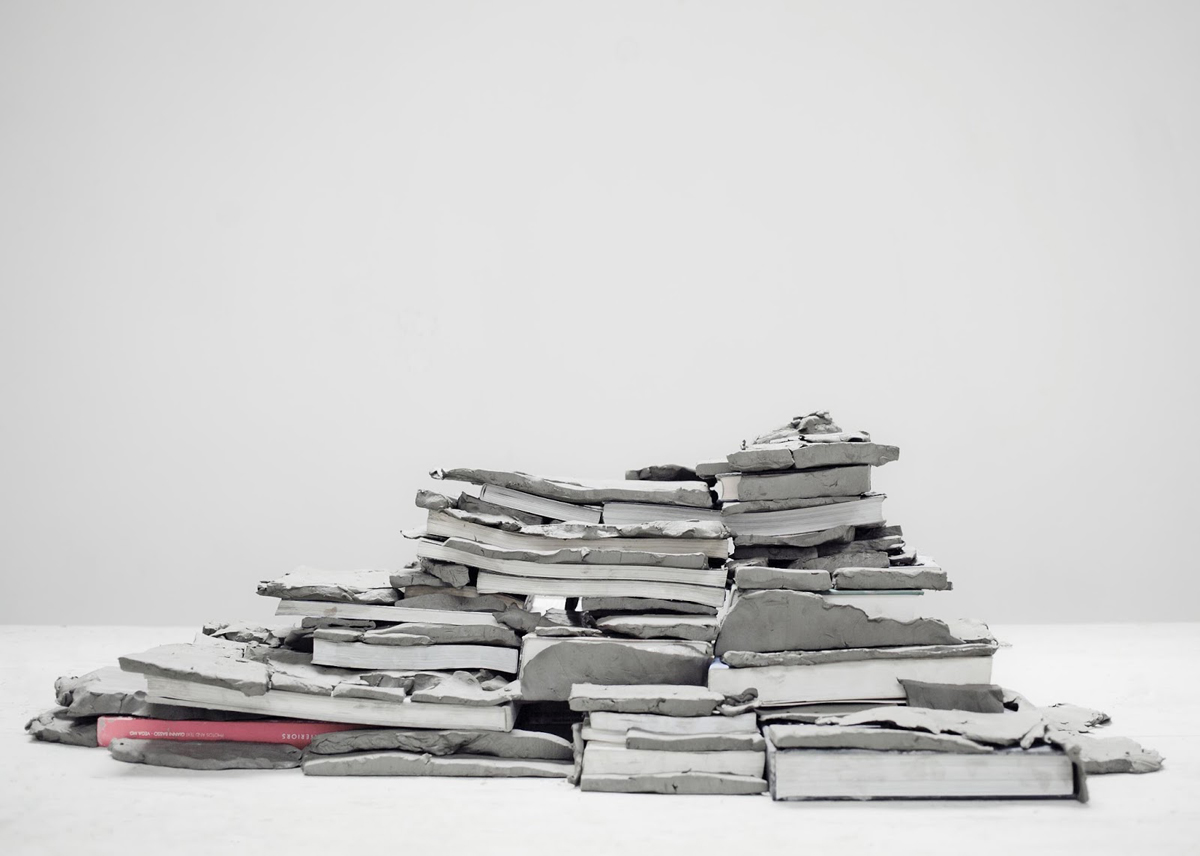
Art is entwined with both class and war as it provides the tools to promote the interests of the capitalist class via signs which mesmerise, confuse and pacify. Sometimes these signs, like flags and royal seals, are put directly to the service of power. At other times art is used to provide a cultural distraction for the elite, who lose themselves in the irony and glamour of the biennale or art fair. For this reason, art can only challenge the injustices of class and war if it first engages in its own war of class with itself. We need to address the unfair working and appointment practices, low or no wages, workplace discrimination by gender, race and sexuality as well as sexual harassment. Art. Class. War aims to place the art world for one evening firmly at the centre of these issues involving the public in a night of music and performance, aiming above all to ask what role art has to play in the nexus of class and war. Proposed artists: League of Art Legends (Electronica and VJ set, Mike Watson and Simone Bertugno), Andrew Cooper (performance), Snovit Hedstierna, Robert Pettena, Shiraz Bayjoo, Antti Tenetz (VJ performance), Fiamma Montezemolo (projection), Mark McGowan.
Robert created an archeological site composed of books concerned with human rights and their violations; the gradual erosion of our human rights in the name of security, trade agreements and corporate power.
He built the books into a miniature city, which he then covered with clay, leaving a few relevant titles half exposed, perhaps focussing on Trades Unions, workers rights, freedom of speech, privacy, to show how all of these Universal Human Rights are being gradually buried under a barrage of multinational agreements and national legislation, now only dimly remembered.
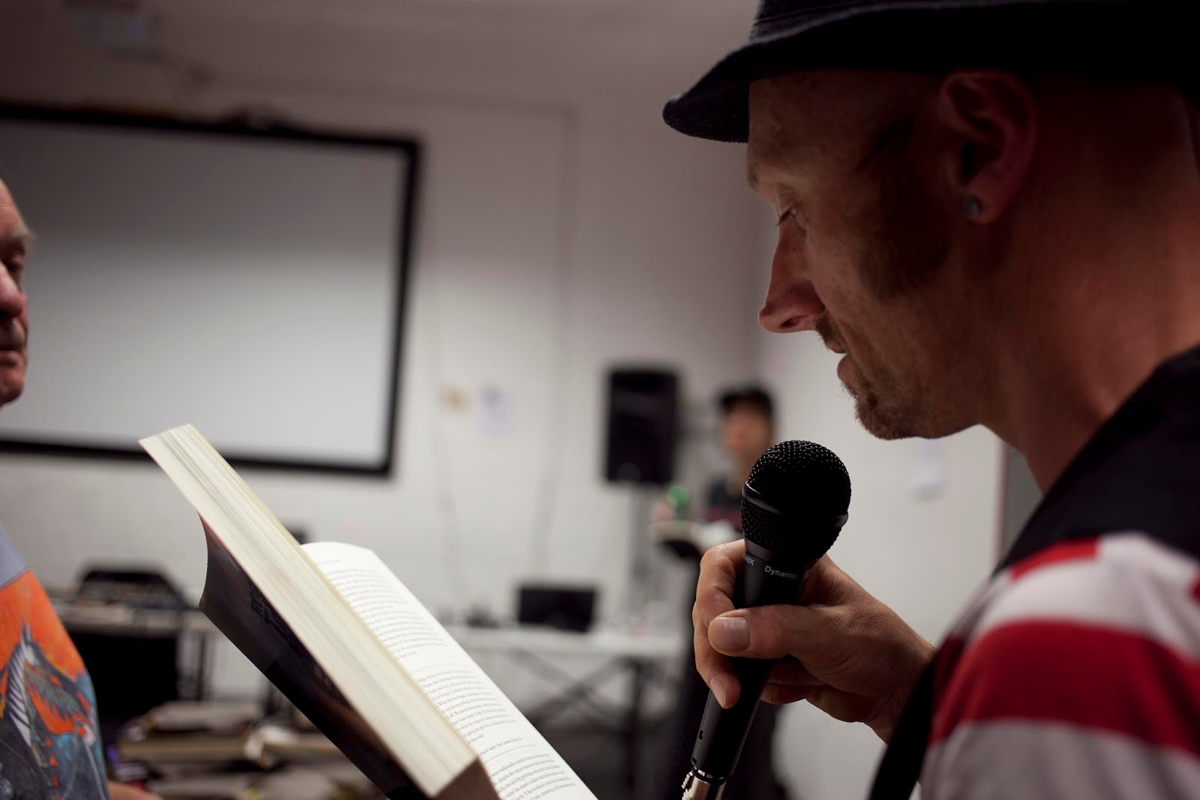
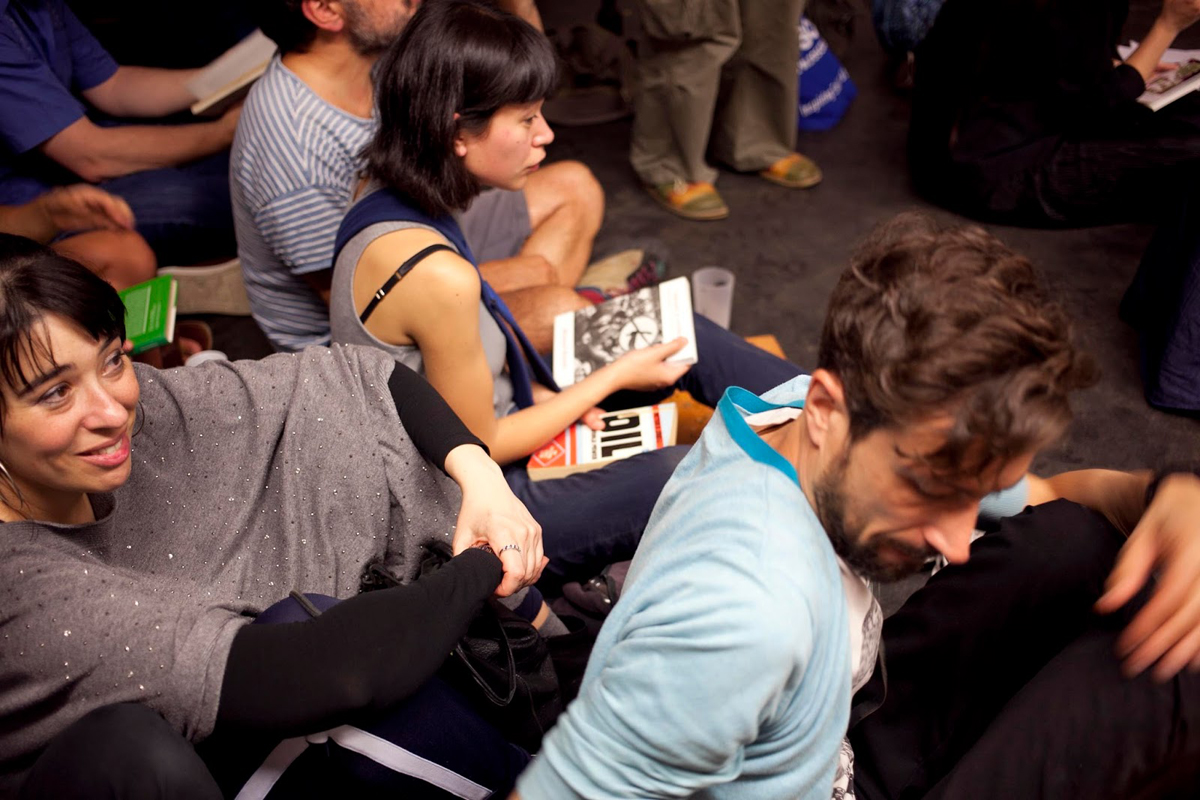
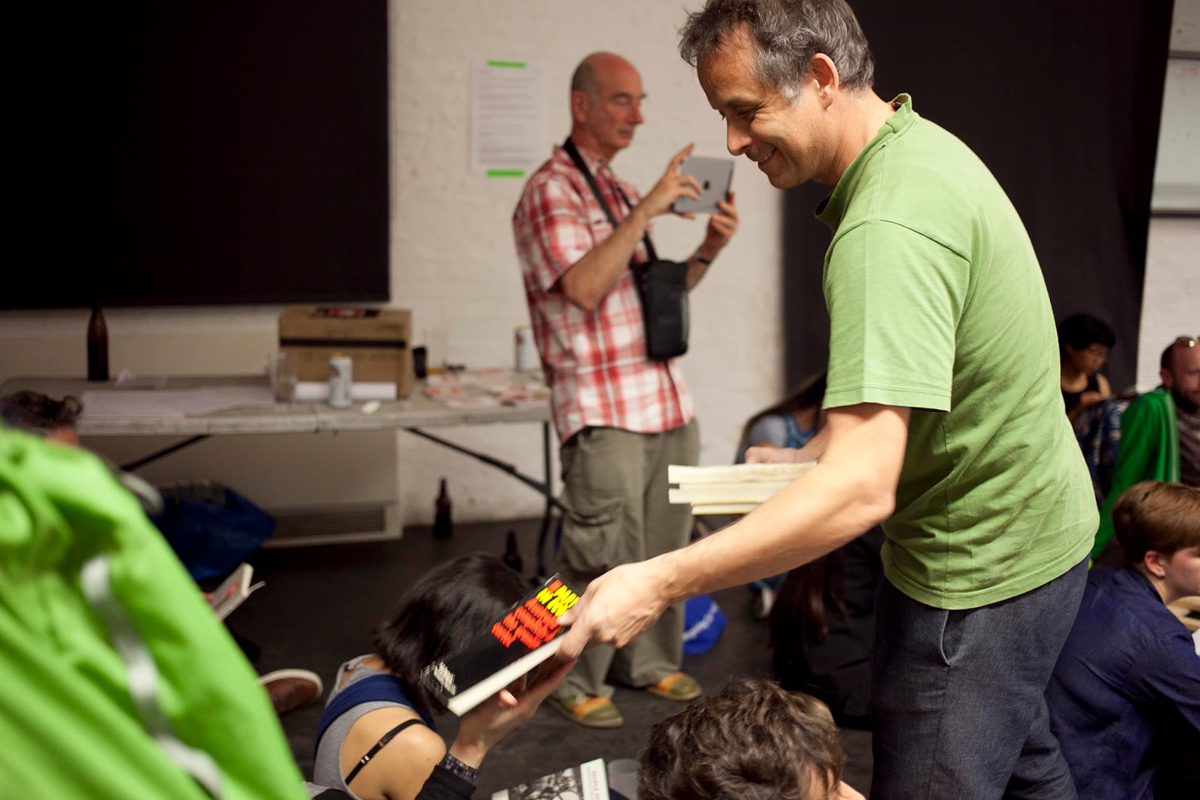
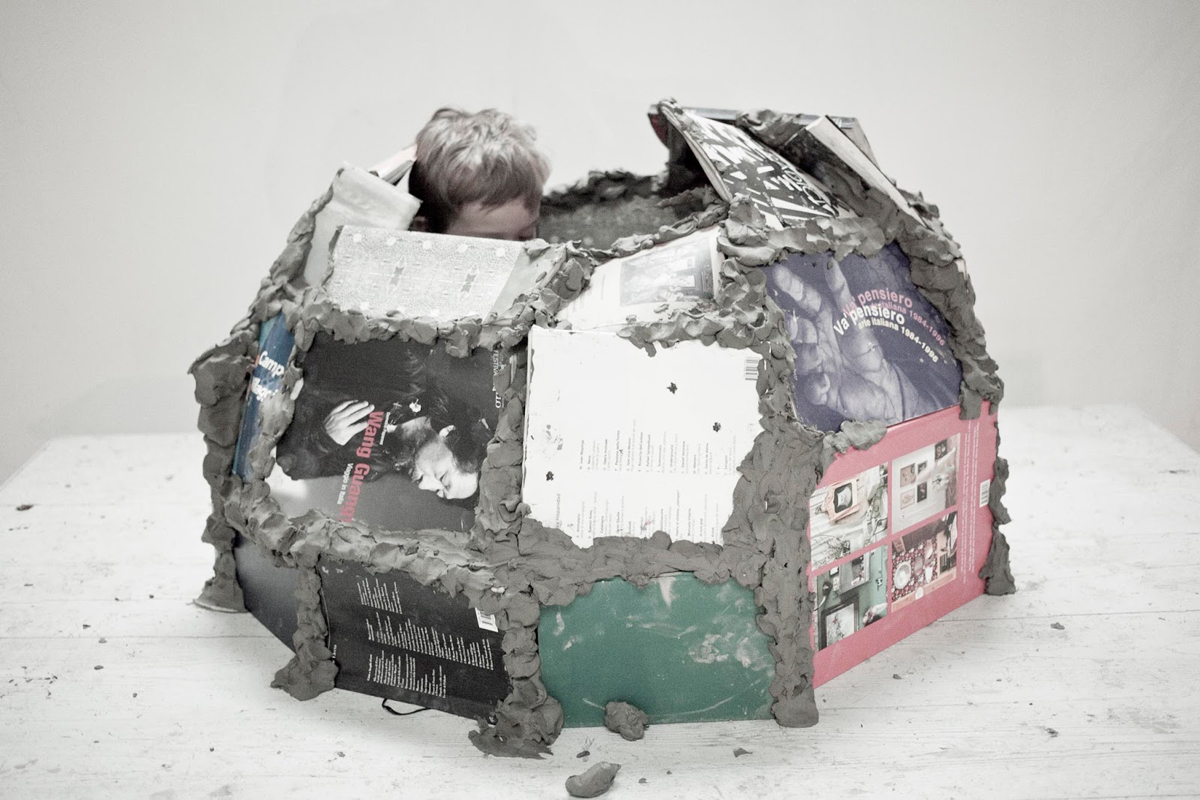
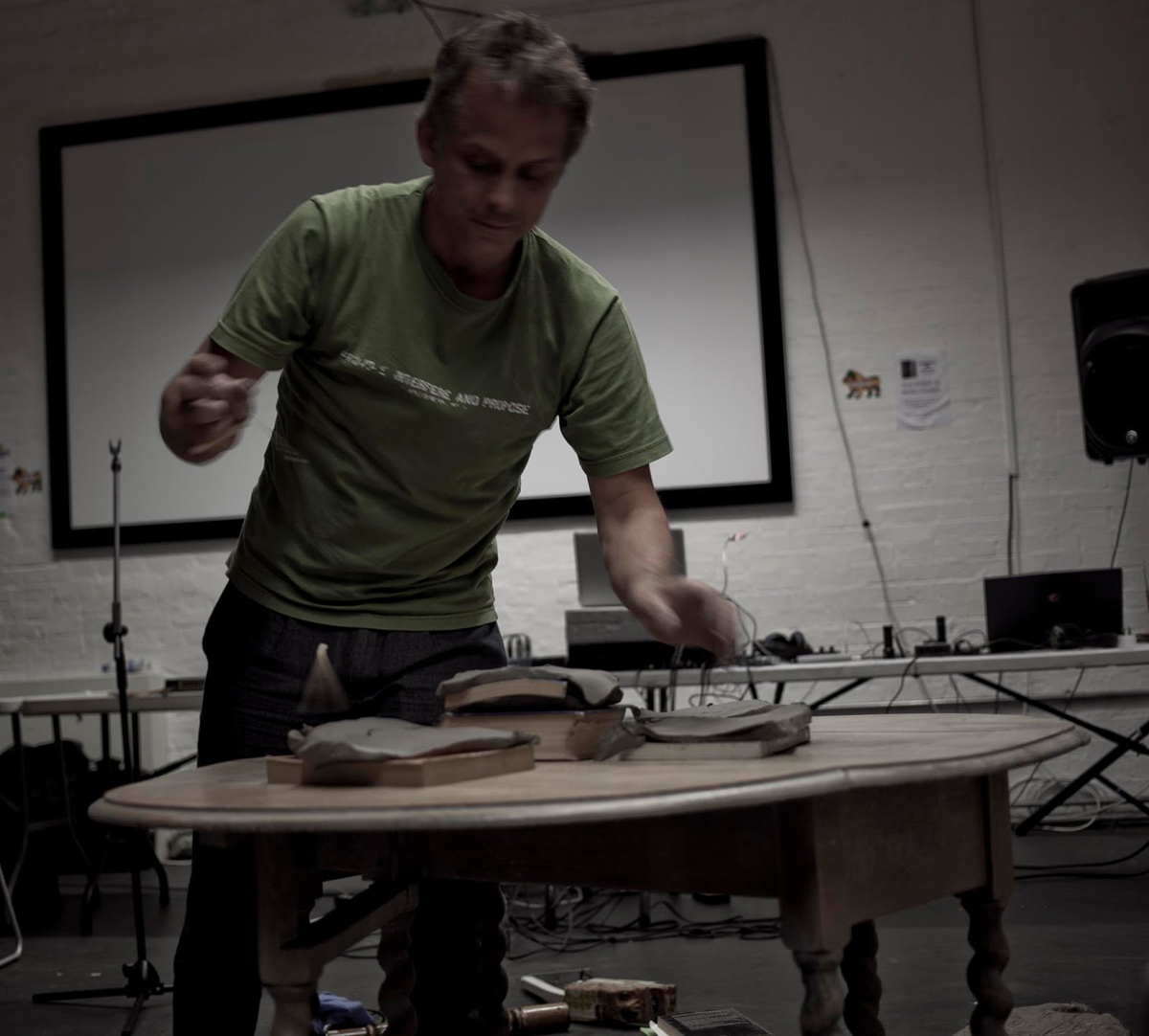
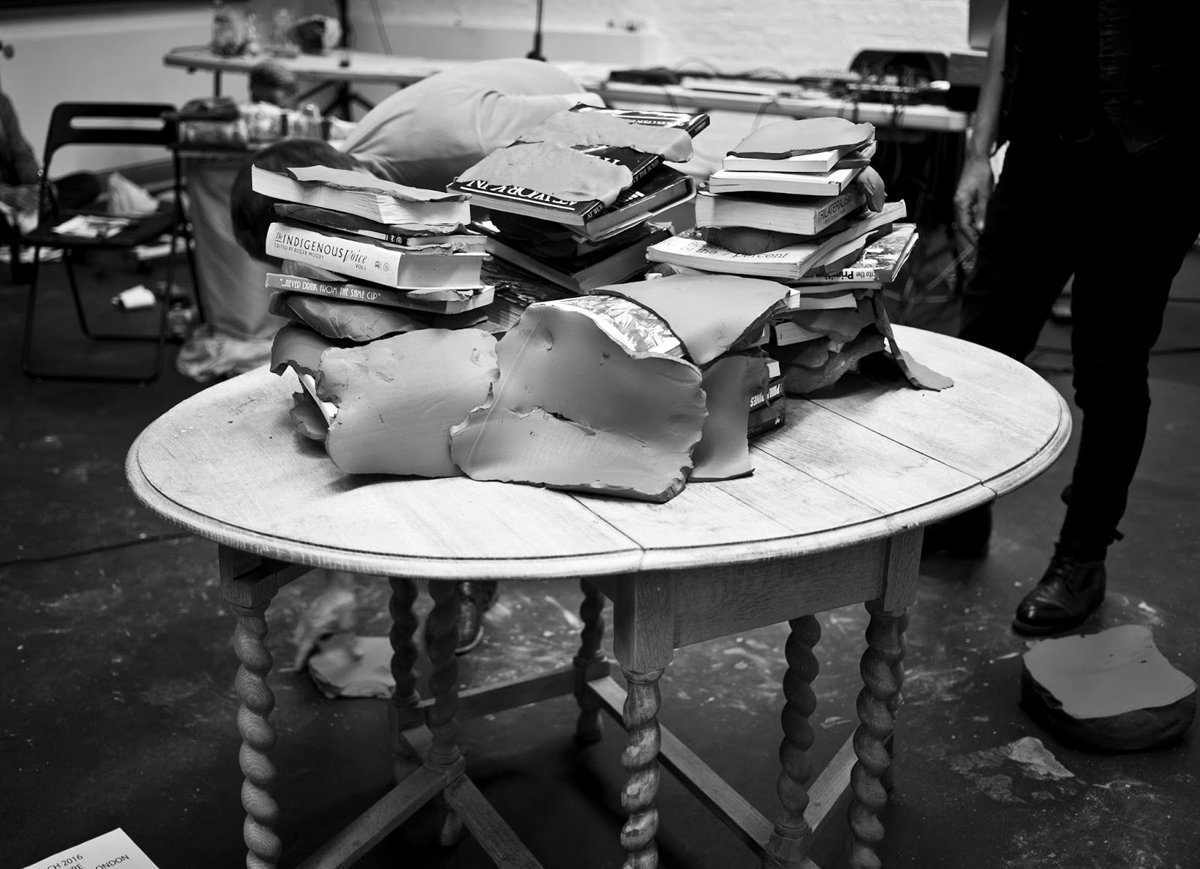
See the project
Robert Pettena, Hunting the Baron, Suburbia Gallery, Granada.
May 2017
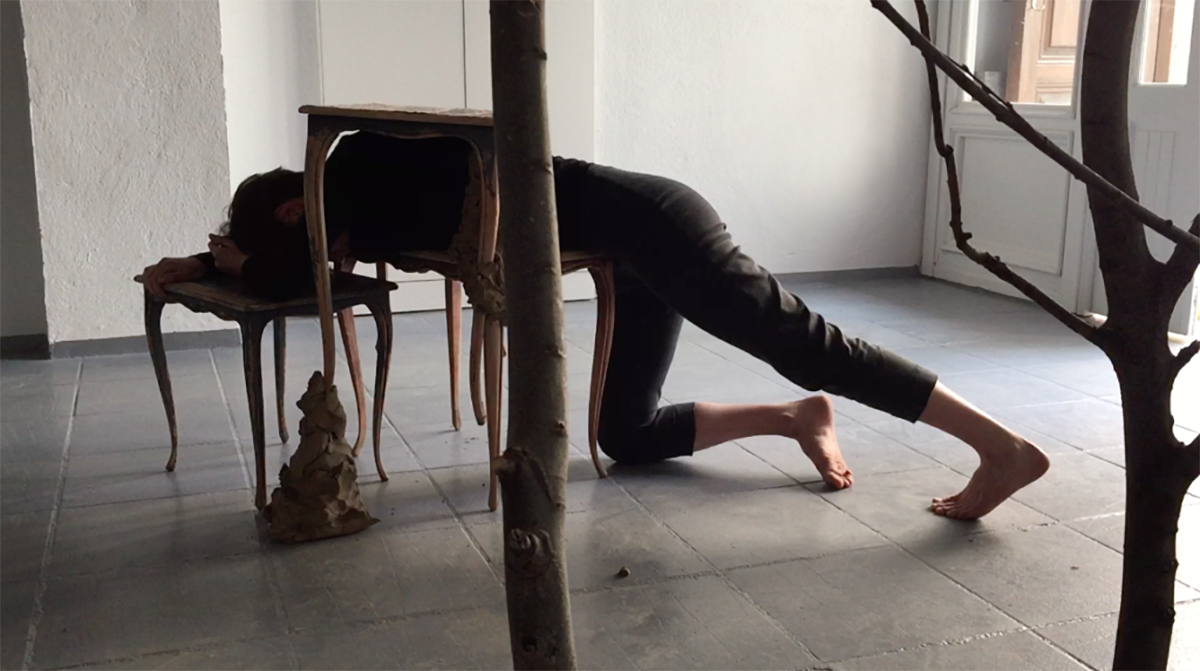
The performer relates with a nest of tables. She lies on top of two of these tables, then 20-30 cm of the clay is built up onto the corners of the tables and another table is placed on top of the clay making a tiny house. Although this is not the original function of the table, she tries to relate to the table, becoming an element of it.The little pillars of clay permit her to liberate herself from this tiny habitation.
>>> See the project <<<


